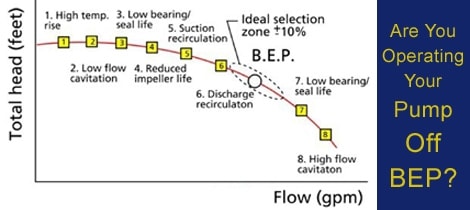AspenMech
Mechanical
- Jun 25, 2012
- 11
Hi all,
I got a quote of a API 610 pump with an efficiency of 38%. I asked the vendor if there are any pumps with an higher efficiency. They have a pump with an efficiency of 48% at the given rate but it is below 80% of the BEP flow rates.
What would be the problems if the flow rate is below 80% of BEP flow rate?
Thanks!
I got a quote of a API 610 pump with an efficiency of 38%. I asked the vendor if there are any pumps with an higher efficiency. They have a pump with an efficiency of 48% at the given rate but it is below 80% of the BEP flow rates.
What would be the problems if the flow rate is below 80% of BEP flow rate?
Thanks!

